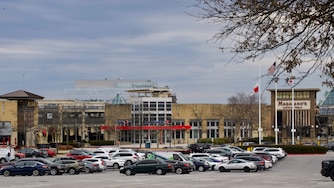Baltimore lawmakers and local advocates spoke with a unified voice Monday, urging state officials to act on several city transportation priorities, including an ambitious, $1.1 billion proposal to expand Maryland Transit Administration bus service.
Baltimore Mayor Brandon Scott was the first of many inside a packed hearing at City Hall to signal his support for the BMORE BUS plan, saying he was “deeply concerned” that the proposal, which the MTA released in June, doesn’t have significant state dollars allocated to it.
“This week, you all can anticipate a letter from my office that underscores the need to fully fund this program,” Scott said.
The Maryland Department of Transportation released its latest draft six-year capital spending plan earlier this month. Monday morning kicked off the annual “road show,” where department leaders field comments and questions about the plan with local jurisdictions.
The meetings give agency heads a chance to tout the investments being made in local communities, but can become tricky to navigate as local lawmakers and residents push for more in a tight budget reality.
The MTA’s BMORE BUS plan proposes an expanded bus network with more frequent service, detailing the steps — and money — needed to make it happen. The plan hinges on a capital investment of up to $600 million to build a fifth bus depot — MTA Administrator Holly Arnold has said that the agency’s four existing bus depots simply cannot accommodate the number of vehicles needed to run more frequent service.
“When an agency puts out a plan, it becomes incumbent on all of us — if we believe it is the right plan — to rally around it and to make sure it is not just a plan that sits on a shelf and accumulates dust," Baltimore City Council President Zeke Cohen told a meeting of transportation advocates last week.
Monday morning, as MDOT leaders and staff trickled into City Hall from War Memorial Plaza, some of those advocates greeted them with signs that read “Better Transit Now” and “MDOT, fund BMORE BUS, treat it like a highway!”

“We are gonna continue to fight for every last dollar for HUR [highway user revenues], for every last dollar for the Red Line, for every last dollar for BMORE BUS,” Cohen said to them.
One by one, members of Baltimore’s delegation in Annapolis and the majority of City Council members approached the microphone inside City Hall to voice the same support — so much so that when Del. Malcolm Ruff, a Democrat representing Baltimore’s 41st district, followed an impassioned speech by his House colleague Del. Mark Edelson that touched on both the bus plan and the proposed east-west Red Line, he began his statements with a simple word.
“Ditto!” Ruff exclaimed. Laughter broke out in the room.
Mobility continues to be a barrier not just for residents running errands and accessing health care, but students who rely on transit to get to school on time, said Del. Melissa Wells, who chairs the city House delegation in Annapolis.
Baltimore’s recent strides in addressing vacant housing and crime, paired with investments in education, are making the city more attractive for people to move to, she said. But underfunding the public transit network could hinder that growth, she and others said.
City Councilman Ryan Dorsey, who chairs the Land Use and Transportation Committee, lamented what he called an outsized commitment to funding public transit in the Washington, D.C., region over Baltimore.
The draft budget commits just over $2 billion in state funds to the D.C. system, which Maryland commits funds to as part of an agreement with Virginia and D.C. authorities. It commits roughly $2.9 billion to the MTA, though some of that is wrapped up with the Purple Line light rail project in Montgomery and Prince George’s Counties.
“We can’t come at the expense of D.C. funding,” Dorsey said.
The drumbeat for BMORE BUS also has grown as it relates to students of Baltimore City Public Schools, who rely on the bus network and make up nearly a fifth of the MTA’s total ridership. In February, a Banner investigation found that students cannot reliably get to school on time using the current transit network.
Additional services the plan proposes “would likely decrease the amount of transfers that students have, would likely get them to school in far shorter periods of time, and help them participate in extracurricular activities and work after school, all of which are things many of us in this room say we care about,” said Roger Schulman, president and CEO of the nonprofit Fund for Educational Excellence.

Acting state Transportation Secretary Samantha Biddle highlighted that the current draft six-year plan includes a “down payment” on the bus plan by programing funds to put toward the acquisition of land for the new bus depot.
Many, including Mayor Scott, warned of the coming decrease in state Highway User Revenues, which is the primary funding source that Baltimore’s transportation department uses to fix roads, bridges and more. Baltimore’s share of such funds will drop after fiscal year 2027 unless the General Assembly acts.
That will create “an annual funding gap of $70 million and a fiscal cliff that will be felt for generations to come,” said Veronica McBeth, director of Baltimore’s transportation department.
Baltimore is the only Maryland jurisdiction that maintains all roads within its geographic boundary. McBeth said that most of its highway user revenues go to fixing state roads, including Interstate 83 and the Baltimore-Washington Parkway.
Both McBeth and Scott asked state officials to take back the responsibility of maintaining such roads, a move Scott said the state has already done with I-95 and I-395, and which McBeth said would help relieve a growing backlog of deferred maintenance projects that totals roughly $2.1 billion.



Comments
Welcome to The Banner's subscriber-only commenting community. Please review our community guidelines.